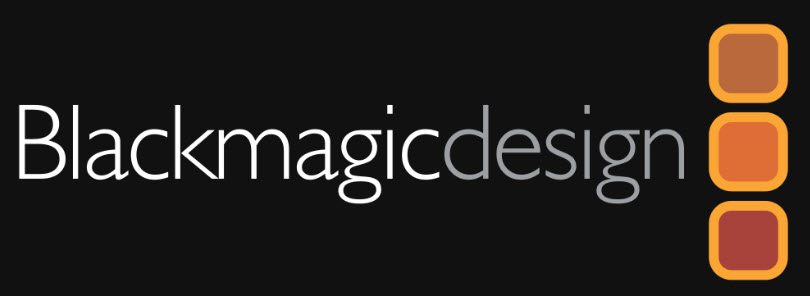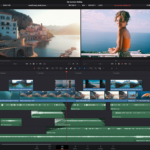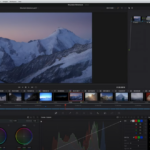DaVinci Resolve 19 Public Beta 2
Today Blackmagic Design has released public beta 2 of DaVinci Resolve 19 which adds improvements and bug fixes for the DaVinci public beta including the ability to wipe or apply grades to clips or active node stack layers. This allows you to wipe between a still in the gallery and a timeline item to compare grades and also lets you choose between applying the grade to an individual layer or to the entire clip.
This update also adds support for the safe area overlay to be used in the edit timeline viewer as well as the ability to have the overlay display during playback in either the cut or edit viewer. That allows you to more easily review and position elements such as logos and titles so that they are always displayed without being cropped.
When using media management tools, you now have the ability to trim audio in your MOV and MP4 video files. This means you can save space by trimming unneeded flac or mp3 audio.
In addition, this update restores the ability to choose whether to update your DaVinci Resolve projects to the latest version when opening them. Now when you open an older project you will be prompted to back up the project before updating it to the latest version of the software.
The update also includes a number of bug fixes from the public beta, including addressing an issue where you couldn’t copy and paste transitions on the edit timeline, allowing compositions with alpha layers to be used on top of other clips, reinstating middle click functionality to apply compositions to Fusion clips and restoring sync functionality to the dialogue separator tool.
DaVinci Resolve 19 Public Beta 2 update is available now as a free download from: https://www.blackmagicdesign.com/au/support/family/davinci-resolve-and-fusion
Spotify Wrapped Campaign Spot Graded With DaVinci Resolve Studio
Blackmagic Design today announced that Colorist Matthew Schwab recently completed Spotify’s Wrapped campaign celebrating Taylor Swift’s status as the music streaming platform’s most streamed global artist in 2023. Schwab used DaVinci Resolve Studio editing, grading, visual effects (VFX) and audio post production software on the project.
Spotify’s Wrapped initiative not only celebrates and continues to honor the top streamed artists, albums, songs, and podcasts of the year but also provides users with personalized statistics, offering a unique reflection of their year in music. Schwab joined with Believe Media’s Floria Sigismondi, who directed the spot, to create the uniquely iconic imagery, complete with references to Swift’s distinct aesthetic elements such as dice and her trademark red lips.
Schwab, alongside Flawless Post, played a crucial role in ensuring the visual cohesion and impact of the campaign. “Floria shot these enormous practical sets, which were meticulously built to match CG backgrounds at Flawless,” said Schwab. “Combining the two required careful incorporation through color grading and VFX compositing.” Schwab’s proficiency in color grading not only brought richness and dimension to the visuals but also ensured the practical sets swiftly integrated with the 2D/3D design.
Working in DaVinci Resolve Studio, Schwab relied on more than just the color page to combine the multiple styles and looks into a cohesive vision. “DaVinci Resolve Studio was a perfect tool for this project,” said Schwab. “For the practical video I used a combination of layers in the edit page, importing mattes, creating garbage mattes with alpha outputs, and the new magic mask tool.
Drawing inspiration from artists such as Hieronymus Bosch and Andrew Wyeth, and Chinese scrolls like Zhang Zeduan’s “Along the River During the Qingming Festival,” Schwab employed his expertise to give the color a painterly textural feeling, reminiscent of his own experience with oil and watercolor painting. Leveraging DaVinci Resolve Studio, Schwab meticulously compared shots as layers on the fly, ensuring consistency with the desired lookset throughout the production process.
“Some of the 2D and 3D art elements were finished before the session while others were being imported while I was working,” continued Schwab. “I needed the versatility DaVinci Resolve offers to go from the color page and back to the edit page to compare different elements of the piece for the supervised color session and the sessions to follow. Because of this complexity, I used a combination of importing an XML, retiming and editing, and ‘dragging and dropping’ additional files and matte layers in the edit and color pages all throughout the session. It was an easy, hassle free process.”
Schwab found using the magic mask on the color page to work well with the tools under the Fusion page. “When I needed a new mask or to refine one I used either the new magic mask tool or I flipped over to Fusion. For comparison to the digital art, I could grab value tones and color HEX codes to match the grade. This powerful all in one versatility within DaVinci Resolve Studio made sure the final look was consistent with the many practical and CG layers.”
Cintel Scanner G3 HDR+ Restores Egypt’s Cinema Treasures to Their Former Glory
Blackmagic Design today announced that the Egyptian Media Production City (EMPC) is relying on the Cintel Scanner G3 HDR+ for real time scanning and DaVinci Resolve Studio to restore and digitize Egypt’s rich film archive. The Cairo based EMPC media complex is contracted by the Ministry of Culture which holds the original prints for hundreds of motion pictures and photographic treasures made between 1940 and the late 1990s. In 2018, The Cinematic Restoration Center (CRC) was established to document and digitize the entire collection. “Cinema is a huge part of Egyptian culture; however, time is running out to preserve that legacy,” begins CRC General Manager, Nada Hossam El Din Farahat. “For decades, celluloid was the principal recording medium, and much of that original negative is now in poor condition and decaying.”
Work began in 2019 to restore and digitize the newsreel archive of the Egyptian Film Magazine captured between 1952 and 2015. “We have always used Cintel for telecine because we know it delivers the best image quality, but the machine we had was old and standard definition only,” reveals Farahat. “In addition, we could not afford to rely on just the one machine for all of our moving images, pictures and documents.”
Turning to system integrator Systems Design, CRC deployed the Cintel Scanner G3 HDR+ to support the next phase of this ambitious project, which will see more than 300 iconic Egyptian feature films restored. “Once a reel has been physically inspected and manually repaired, that film neg is cleaned to remove any dirt, fingerprints or dust,” explains Farahat. “The reels are then scanned in real time at 4K resolution using Cintel scanner and captured in DaVinci Resolve Studio where we conduct our color, restoration and mastering work.”
In parallel, the Cintel Audio and KeyKode Reader records high quality audio information from the negative in sync with picture scanning. The precision capstan encoder automatically corrects for wow and flutter, even as the scanner’s speeds change. In addition, KeyKode numbers identify individual film frames, dramatically speeding up post production workflows. “What makes the Cintel Scanner G3 superior to other scanners is that it is linked to DaVinci Resolve Studio. Information is automatically captured from Cintel and imported into DaVinci, saving us considerable time. Other systems do not offer that level of integration for scanning to final delivery,” notes Farahat.
DaVinci Resolve Studio also features tools for automatic dirt removal, dust busting, deflickering, spot patch repair with smart fill technology, and advanced temporal and spatial noise reduction.
The 300 iconic drama, comedy and musical films currently being restored were produced between 1941 and 1995. “Restoring them all to their former glory will take three years, after which a selection will be screened at film festivals, and some will be given a wider public release so that cinema lovers can enjoy them once more,” concludes Farahat.










